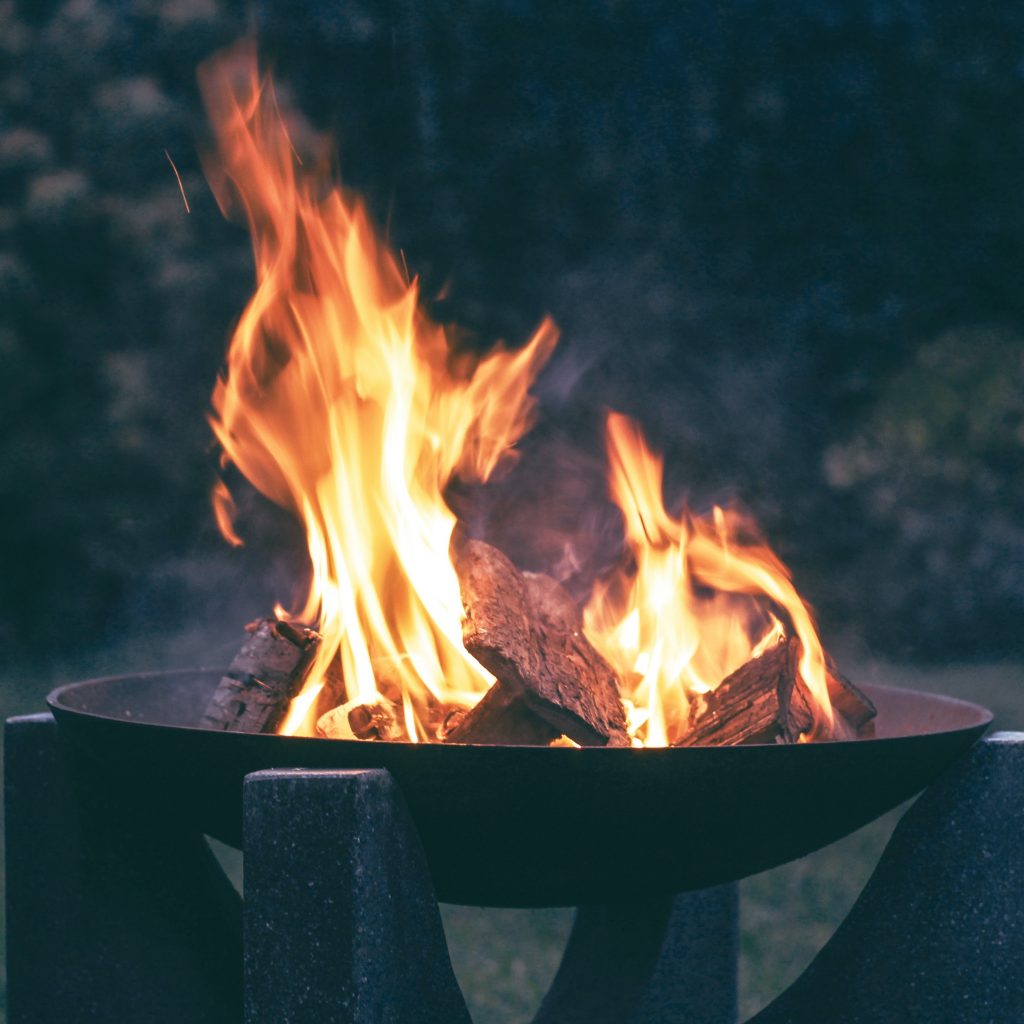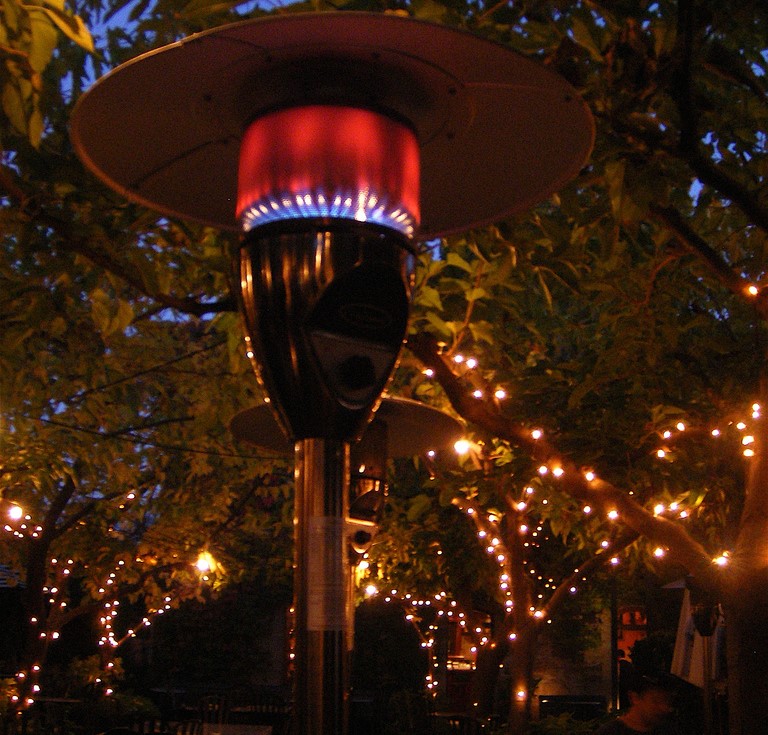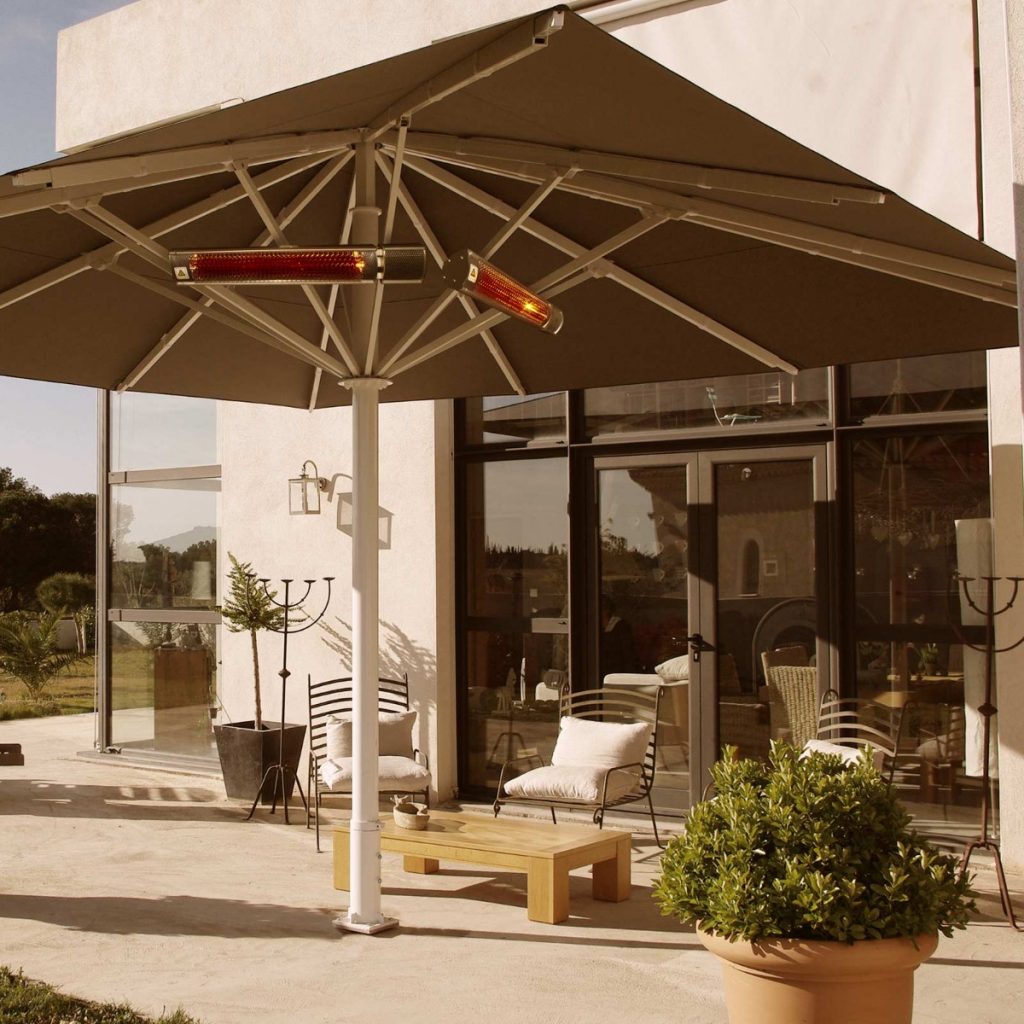Nothing complements cosy outdoor hangouts more than having a heater on hand to provide you and your guests with reliable, all-day warmth. But what makes the best form of outdoor heating? There are quite a few aspects to consider, from energy efficiency to maintenance. Read on as we look over the main types of outdoor heating, how they work and ultimately, which one is the superior choice, so you can enjoy your outdoor heater knowing you’ve invested in the best.
Outdoor heating: what are the options?
When looking for a heater for your outdoor space, you’ve got a few choices:
- Solid fuel patio heaters
- Gas patio heaters
- Infrared patio heaters
What do all of these heaters have in common? They transfer heat through radiation, which is essential when dealing with the infiniteness of the outdoors. Radiant heat is the same type we get from the sun, a particularly soothing warmth since it’s what our bodies naturally absorb and emit. Unlike convection which works by heating the air, radiation travels in a straight line, transferring heat directly to people and objects.
Now you know the basics, let’s get down to specifics – which type of heater is the best choice for the outdoors?
Solid fuel patio heaters

Solid fuel simply refers to a solid material that can be burnt, so you’re looking at any type of heater that uses a controlled fire to create its warmth. Fire is of course the original outdoor heater, so you could have something as rudimentary as a homemade fire pit, or shop around for an outdoor fireplace or chimenea. The solid material used for the fire can be anything from logs, charcoal, and woodchips. Working them is straightforward: you’ll need to build a base using kindling, add your fuel and light it. Simple.
How efficient are solid fuel heaters?
As far as efficiency goes, solid fuel heaters aren’t the best. However, there are a few ways you can improve this: invest in a metal heater that will store the heat better and use higher quality fuel, which is more expensive but will produce less ash. Smokeless firepits also allow you to use less fuel while enjoying more heat from the flames. Whatever you do to improve efficiency, your heater is still releasing carbon dioxide into the atmosphere, so there are definitely more efficient outdoor heaters out there.
How much maintenance do solid fuel heaters need?
You’ll need to build and light a fire every time you use a solid fuel heater and clean it up after use. If you wanted to use it regularly, both that and fuel sourcing will take up quite a bit of time and money. These types of heaters are also not suited for set-and-forget heating. The fire will need maintaining throughout – whether it’s through topping up the fuel and kindling, or by keeping a watchful eye on the flames. There are always risks involved when dealing with fire other than the obvious: gusts of wind can blow sparks and smoke in the face of users and sitting by your heater for too long will cause irritation to the eyes, nose and throat.
Solid fuel patio heaters: the verdict
A classic option for outdoor heating, solid fuel patio heaters add a rustic, attractive ambience to your space. But the hazards posed by fire and smoke inhalation, and the constant maintenance involved can make these heaters more trouble than they’re worth.
| Pros | Cons |
| Can have multiple functions (used for cooking) | Hazards from fire and smoke inhalation |
| DIY-friendly | Requires a steady supply of fuel |
| Will make clothes and hair smell | |
| Requires constant maintenance |
Gas patio heaters
The most common type of gas heater runs on propane. Gas heaters work similarly to gas hobs: the gas is ignited in the burner and produces a warming flame, with the heat radiating outwards and upwards. The main pitfall of gas heaters is that you will need to replace the gas cylinder after use, with a 13kg gas cylinder lasting about 10 hours. For occasional use, this shouldn’t be too costly, but as you could be spending £40 every time you replace it, the running costs of your gas heater will start racking up.
How efficient are gas heaters?
Modern gas heaters are more efficient than their predecessors, with many fitted with a reflector that refocuses the direction of heat to surface areas. Despite these improvements, gas is still a fossil fuel which, when burnt, releases carbon dioxide into the atmosphere, which is far from efficient.
How much maintenance do gas heaters need?
Regular light maintenance after each use is key in keeping gas heaters clean and free of blockages. Like your gas boiler, your outdoor heater will require yearly servicing by a Gas Safe engineer. This is to ensure all parts are running smoothly and there’s no risk of carbon monoxide leaks. You’ll also have to start replacing parts such as the gas hose and regulator every 5-10 years.
Gas patio heaters: the verdict
While gas heaters come cheap, the costs of running them add up. The reduced efficiency of a gas heater and the need to have them serviced regularly may not suit many users.
| Pros | Cons |
| Versatile designs | Produces CO2 emissions |
| Cheap upfront cost | Expensive to run |
| Instant heat | Attracts mosquitos and other bugs |
| Requires a steady supply of fuel | |
| Annual servicing |
Infrared patio heaters
Infrared patio heaters are, quite literally, a breath of fresh air when it comes to outdoor heating. By converting electricity into 100% radiant heat, they’re designed to provide natural, soothing warmth without emitting polluting gases. These types of heaters are the opposite of one-size-fits-all: with different heat strengths to choose from they’re suited to every season. Sophisticated features like remote control and timer modes make infrared heaters the perfect choice for those who want to enjoy their heater without having to micromanage. Simply mount your infrared heater to the wall, ceiling or patio stand, plug in to an IP-rated socket and enjoy.
How efficient are infrared heaters?
Infrared heaters are undoubtedly the most efficient when compared to gas and solid fuel. They convert every watt of energy into usable heat so nothing is wasted, allowing for 100% efficiency at point of use. Designed to be long-lasting, they supply warmth solely through radiation so heat isn’t lost to air movement either. You could even pair your infrared heater with a renewable energy tariff. That way, you’re getting the same great results completely carbon free.
How much maintenance do infrared heaters need?
Infrared heaters require very little maintenance and no professional servicing. A simple clean and check for any damages is enough to keep your infrared heater running smoothly all year round. As these types of heaters don’t burn using a combustible fuel, you’ve removed the dangers of carbon monoxide leaks – making infrared heaters one of the safest outdoor heaters available.
Infrared patio heaters: the verdict
Infrared patio heaters are the best form of outdoor heating. They’re efficient, cost-effective, and the most environmentally friendly option.
| Pros | Cons |
| Extremely energy efficient | Requires an IP-rated socket to run |
| Environmentally friendly | Can be slower to reach max temperatures than other heaters |
| Minimal upkeep and no mandatory servicing | |
| No need for storing and sourcing fuel | |
| Weatherproof rated | |
| Customisable heat outputs and intensities |
Invest in the best with Infrared Heaters Direct
Infrared is always going to come out on top when compared to other outdoor heaters, and for the most diverse range at the best price, you’re in the right place. Low maintenance, discreet and incredibly safe, we’ve got an infrared heater to suit any preference. Check out our full range or explore our extensive categories: we’ve got portable units for limitless mobility and no glare heaters for subtle, long-lasting warmth. Whatever you’re looking for, Infrared Heaters Direct has something to match.



